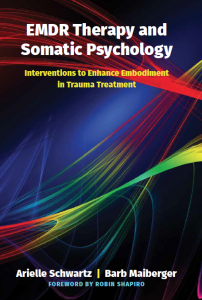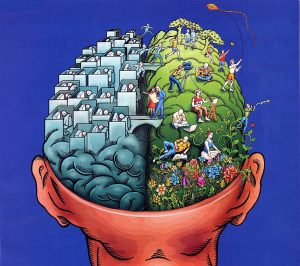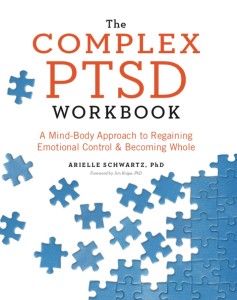EMDR Therapy for PTSD
Traumatic experiences can derail your life unless you have a way to process the event. EMDR Therapy helps you work through these difficult feelings and gets you back on the right track. The developer of this approach to trauma treatment, Francine Shapiro, says that we all have an innate capacity to process information and learn from all experiences, even difficult ones. She calls this process Adaptive Information Processing model. However, trauma can interrupt this natural process and can lead to distressing symptoms unless you have an opportunity to process the emotions and memories related to the event.
How does EMDR Therapy work? In order to better understand this process, we turn our attention to the way that memories are stored in the brain as a form of neural networks. A neural network is a group of interconnected brain cells (neurons) that fire together. Traumatic memories are maintained as maladaptive neural networks that result in a limited ability to adapt, process, and resolve traumatic stress. You can think of this like a record that has a scratch in it. The needle will skip on that spot repeatedly unless we intervene. (If you were born after record players went out of use, you can think of a CD that keeps getting stuck in the same spot).
“EMDR Therapy changes maladaptive neural networks by connecting the traumatic memory with new information. The distressing thoughts and emotions are blended with new positive thoughts and emotions; embodied awareness allows frozen sensations in the body to resolve through healing movements.”
-Arielle Schwartz
Neural Networks and Trauma
Every time we learn a new behavior we create a new neural network. Frequent repetitions of the behavior strengthen that neural network through myelination of the nerve pathways which allow the signals to move quickly and smoothly. You can think of this process like the act of learning to ride a bike or playing a piece of music. The more time spent practicing, the easier it becomes.
All memories are patterns of neural networks. One neural network can be connected to other neural networks when a behavior or memory has similar elements to other events or experiences. For example, smells, taste, images, touch, sounds, thoughts, emotions, physical sensations, beliefs and participants that are similar to previous events can initiate a connection between neural networks of memories.
Ideally, the neural networks of our memories connect across various areas of the brain. For example, the right hemisphere of the brain is more likely to hold our negative perceptions and emotions about our experiences of memories. In contrast, the left hemisphere is specialized for positive emotions. Neural networks that communicate across left and right hemispheres of the brain helps us express feelings with words and integrate positive and negative perceptions of emotions. Additionally, integration of neural networks between upper brain centers (neocortex) and lower brain centers (limbic system and brain stem) helps with managing impulses and developing greater self-control.
Traumatic memories can be thought of as impaired encoding of neural networks. These memories are not integrated with other positive experiences and are limited in their ability to accommodate new information. This disconnection impairs one’s ability to be emotionally flexible or cognitively constructive while thinking about difficult life events.
How Does EMDR Therapy Work?
Traumatic memories can get compartmentalized in the right hemisphere of the brain. EMDR Therapy helps you to build bridges and access your resources. This occurs by re-activating the neural networks associated with a traumatic event and finding a reparative experience that can facilitate integration throughout the brain. Initial phases of EMDR Therapy focus on resource development to strengthen the neural networks associated with positive sensations, emotions, and cognitions. Examples of resources include moments of loving others, feeling loved by others, feeing comforted or protected, feeling competent or successful, and experiences of safety, peace, or relaxation. This process helps you increase tolerance for the processing of traumatic memories during the Desensitization phase of treatment.
The Desensitization Phase incorporates the dual awareness state, in which you maintain awareness of your present moment experiences while simultaneously recalling memories of the traumatic event. Dual Attention Stimulation (DAS) is used during this phase in the form of bi-lateral eye movements, pulsers, or tones that alternate between the left and right side of the body. Research has demonstrated that EMDR Therapy successfully reduces the vividness, somatic arousal, and emotional intensity associated with distressing memories (Barrowcliff et all., 2004; van den Hout et al., 2013).
There have been several hypothesized reasons for the effectiveness of EMDR Therapy:
- DAS taxes working memory: This interrupts your ability to focus on the disturbances associated with the traumatic event (van den Hout, et al., 2013)
- Bi-lateral eye-movements mimics REM sleep: This facilitates communication across left and right hemispheres (Stickgold, 2002).
- DAS rhythms stimulate the cerebellum and thalamus: Stimulation of the thalamo-cortical connections appears to enhance information processing throughout the brain (Bergmann, 2008).
- DAS stimulates the anterior cingulate cortex (ACC): The ACC connects upper brain centers to lower brain centers which is associated with relief from flooding and re-experiencing symptoms of PTSD (Kaye, 2008).
- DAS stimulates the orienting response: The orienting response is a reflex that draws your attention to new stimuli. The orienting response allows you to observe your current environment and determine that there is no current threat (Barrowcliff et al., 2004). The orienting response helps you perceive and integrate new information which can change emotionally loaded memories.
These various hypothesized mechanisms of EMDR Therapy appear to dovetail with each other and are not considered mutually exclusive explanatory mechanisms. That said, the field of neuroscience is still new; therefore, the physiological foundations of traumatic memories and how EMDR Therapy works are still in the process of being discovered. Our understanding will likely continue to evolve over time.
A Final Reflection
Seeing any human experience through the lens of neuroscience is not only limited but also over-simplified. My teacher, Betty Cannon, once said that the difference is analogous to studying the parts of a violin (the bridge, the strings, the bow) and the process of making music. The human journey is complex and extraordinary beautiful…even amidst the pain and loss.
References in Post:
- Barrowcliff, A. L., Gray, N. S., Freeman, T. C. A., & MacCulloch, M. J. (2004). Eye-movements reduce the vividness, emotional valence and electrodermal arousal associated with negative autobiographical memories. Journal of Forensic Psychiatry and Psychology, 15 , 325–345.
- Bergmann, U. (2008) The Neurobiology of EMDR: Exploring the Thalamus and Neural Integration. Journal of EMDR Practice and Research, 2(4) 300-314.
- Kaye, B. (2008). Reversing reciprocal suppression in the anterior cingulated cortex: A hypothetical model to explain EMDR effectiveness. Journal of EMDR Practice and Research, 2(1), 88-99.
- Stickgold, R. (2002). EMDR: A putative neurobiological mechanism of action. Journal of Clinical Psychology, 58(1), 61–75.
- Van den Hout, M., Muris, P., Salemink, E., & Kindt, M. (2001). Autobiographical memories become less vivid and emotional after eye movements. British Journal of Clinical Psychology, 40, 121-130.
- Van den Hout, M.A., Eidhorf, M.B., Verboom, J., Little, M., & Engelhard, I.M. (2013). Blurring of emotional and nonemotional memories by taxing working memory during recall. Cognition and Emotion, doi: 10. 1080/02699931. 2013. 848785
Image Credit: CopyrightFreePhotos.HQ101.com
More on EMDR Therapy for PTSD:
- EMDR Case Study – Marie’s Story
- Does EMDR Therapy work for Complex PTSD?
- EMDR Therapy and Somatic Psychology – A Synthesis in Healing
Heal and Learn with Dr. Arielle Schwartz
Connect to this post? The EMDR Therapy and Somatic Psychology book, is available on Amazon! Click here to check it out and increase your toolbox for healing. An integrative and effective approach to healing from trauma.

Want a mind-body approach to healing PTSD?
The Complex PTSD Workbook, now available on Amazon! Click here to check it out and increase your toolbox for healing. Whether you are a client or a therapist this book will offer a guided approach to trauma recovery.
About Dr. Arielle Schwartz
Dr. Arielle Schwartz is a licensed clinical psychologist, wife, and mother in Boulder, CO. She offers trainings for therapists, maintains a private practice, and has passions for the outdoors, yoga, and writing. Dr. Schwartz is the author of The Complex PTSD Workbook: A Mind-Body Approach to Regaining Emotional Control and Becoming Whole (Althea press, 2016) and co-author of EMDR Therapy and Somatic Psychology: Interventions to Enhance Embodiment in Trauma Treatment (Norton, 2018). She is the developer of Resilience-Informed Therapy which applies research on trauma recovery to form a strength-based, trauma treatment model that includes Eye Movement Desensitization and Reprocessing (EMDR), somatic (body-centered) psychology and time-tested relational psychotherapy. Like Dr. Arielle Schwartz on Facebook, follow her on Linkedin and sign up for email updates to stay up to date with all her posts.






